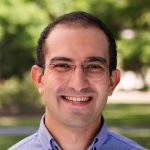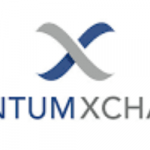Quantum News Briefs August 24: TU Delft receives joint funding in quest for “missing link” in quantum communication; PQSecure’s unified hardware IP for post-quantum cryptography based on Kyber & Dilithium, $1M NSF grant supports development of quantum sensors at UMD + MORE

Quantum News Briefs August 24:
TU Delft receives joint funding in quest for “missing link” in quantum communication
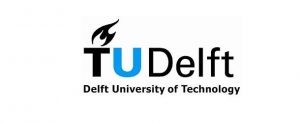 Delft University of Technology and its Kavli Institute of Nanoscience received a five-million-dollar grant from The Kavli Foundation to fund a collaborative effort to develop the quantum equivalent of telecommunication. Quantum News Briefs summarizes the August 23 announcement.
Delft University of Technology and its Kavli Institute of Nanoscience received a five-million-dollar grant from The Kavli Foundation to fund a collaborative effort to develop the quantum equivalent of telecommunication. Quantum News Briefs summarizes the August 23 announcement.
A team of 14 quantum physicists and biophysicists have set out to find a missing link between quantum computing, sensing, and communication: a transduction system to send and receive quantum information across a broad range of frequencies. This system would allow for a standardised way of connecting quantum devices and sharing information between them, similar to how the worldwide telecommunication network connects us today and allows us to share information through the internet, Bluetooth, phone calls, and more.
Now that quantum computers are becoming reality, a new problem arises, grant coordinator Mazhar Ali says: “We have no general bridge to transfer quantum information from qubits or quantum sensors to the telecommunication fabric that is surrounding the planet. This bridge is called quantum transduction; converting quantum information into an electromagnetic signal that is suitable for telecommunication and back again. Transduction means simply converting one form of energy into another. Broadband transduction, converting this information across a wide frequency range, is critical to our society. It allows us to connect with each other, talk to each other, and use all of our devices in coordination.”
Thus, quantum physicists and biophysicists from Delft University of Technology, QuTech and the Kavli Institute of Nanoscience Delft have joined forces to look for broadband quantum transduction. “Current computers generate information at a frequency of a few gigahertz, while telecom signals are vibrating a thousand times faster; at hundreds of terahertz. However qubits, for example, operate at relatively specific frequencies of five to ten gigahertz. That means we need to find a bridge from the qubit range of a few gigahertz up to the telecom range of hundreds of gigahertz,” says Ali. “But unlike connecting today’s computer data to a satellite, there is the additional challenge of preserving quantum mechanical information while sharing the signal. What we’d love to do is use the same forms of communication that we have while preserving quantum particle and phase information for a broad range of frequencies.” Click here to read the original article in-entirety.
PQSecure’s unified hardware IP for post-quantum cryptography based on Kyber & Dilithium
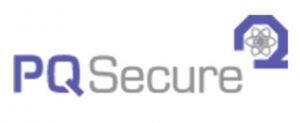 PQSecure™-CRYSTALS from PQSecure Technologies, LLC. is a set of hardware IP cores designed for various target applications of digital signatures and key encapsulation based on Dilithium and Kyber algorithms. Quantum News Briefs summarizes recent announcement.
PQSecure™-CRYSTALS from PQSecure Technologies, LLC. is a set of hardware IP cores designed for various target applications of digital signatures and key encapsulation based on Dilithium and Kyber algorithms. Quantum News Briefs summarizes recent announcement.
PQSecure™-CRYSTALS supports parameters for all three FIPS recommended security levels with countermeasures (optional) against various side-channel and known fault attacks. It can be used in various security protocols to replace or augment the traditional elliptic curve based key exchange and digital signatures (ECDH and ECDSA) such as TLS, which are potentially compromised by quantum computing.
PQSecure™-CRYSTALS has several variations that operate at different levels of performance and security levels. The lowest area (tiny) design is PQSecure™-CRYSTALS-1000T, the compact design is designated PQSecure™-CRYSTALS-1000C, the balanced-performance design is PQSecure™-CRYSTALS-1000B, and the highest-performance design is PQSecure™-CRYSTALS-1000H. Click here to read announcement in-entirety.
$1M NSF grant supports development of quantum sensors at UMD
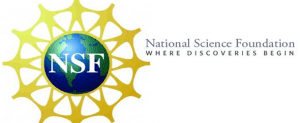 The National Science Foundation (NSF) today announced it has awarded a $1 million, three-year grant to a University of Maryland-led multi-institutional team working to overcome barriers to further progress in quantum sensors, which offer more advanced capabilities than their traditional, or “classical” counterparts. Quantum News Briefs summarizes August 22 article in Maryland Today.
The National Science Foundation (NSF) today announced it has awarded a $1 million, three-year grant to a University of Maryland-led multi-institutional team working to overcome barriers to further progress in quantum sensors, which offer more advanced capabilities than their traditional, or “classical” counterparts. Quantum News Briefs summarizes August 22 article in Maryland Today.
The team is one of 18 from around the country that successfully competed for grants awarded by the NSF as part of its Quantum Sensing Challenges for Transformational Advances in Quantum Systems program.
“Quantum mechanics involves phenomena such as superposition and ‘spooky action at a distance,’ where a particle that is in New York could be correlated with one in Los Angeles, in a way that classical physics can’t explain,” said UMD mechanical engineering assistant professor Avik Dutt, who leads the team and holds joint appointments in the Department of Mechanical Engineering and the Institute for Physical Science and Technology. “Quantum sensing aims to use these unusual properties to improve sensitivity, detection power and resolution.”
Dutt and his colleagues will hone in on as-yet unsolved challenges. His co-PIs are Paul Lett, a fellow of the Joint Quantum Institute and adjunct professor of physics who works at the National Institute of Standards and Technology, Jelena Vuckovic of Stanford University and Peter Maurer of the University of Chicago.
Dutt and his students will engineer the required devices and systems at the Maryland NanoCenter’s FabLab, along with Lett’s and Vuckovic’s teams. Maurer’s team at the University of Chicago will apply its innovations to chemical and biomolecular detection. Click here to read the Maryland today article coverage in-entirety.
D-Wave unveils enhanced algorithmic updates to CQM hybrid solver in Leap Quantum Cloud Service
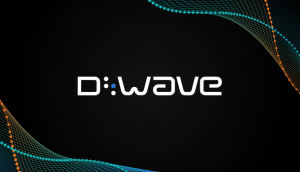
D-Wave Quantum Inc. on August 22 announced an update to its Constrained Quadratic Model (CQM) hybrid solver in its Leap quantum cloud service. D-Wave has introduced algorithmic updates to its CQM solver that deliver increased performance for existing binary problem classes, which can include offer allocation, portfolio optimization, and satisfiability.
Optimization problems are ubiquitous in today’s enterprise, and current quantum-hybrid technologies can help developers tackle these quadratic problems to find better solutions. To benchmark the performance enhancements made to the updated hybrid solver, D-Wave tested 2,045 binary quadratic problems, with the new CQM solver winning 80% of the problems, compared to 71.1% and 62.6% of previous versions. To learn more about the CQM hybrid solver and its most recent performance results, the technical report is available here.
“Our mission at D-Wave is to unlock the power of practical quantum computing for our customers,” said Trevor Lanting, vice president of software, algorithms and cloud services at D-Wave. “These most recent updates to our CQM hybrid solver reflect our commitment to building solutions that bring real enterprise applicability and impact today. We’re excited by the performance enhancements that we are seeing, and our rapid pace of innovation allows us to expand quantum-hybrid workflows to help solve increasingly complex problems.”
The CQM solver was first made available in October 2021. It incorporates problem constraints, allowing users to benefit from a simplified expression of their constrained problems, significantly expanding the size and complexity of problems customers can solve with constraints in D-Wave’s hybrid solver to find the best answers to complex business problems. Click here to read the news announcement in-entirety.


















